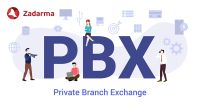- What is call monitoring?
- What is call barging?
- How is call barging implemented?
- What is a whispering mode?
- How are whispering modes implemented?
- How is call barging and whispering modes helping improve call centre productivity?
- What are the benefits of having call barging & whispering modes?
- Are there any downsides to call barging?
- Call barging and whisper effectiveness
Zadarma has recently introduced ‘Call Monitoring’, ‘Call Barging’ and ‘Whispering Modes’ as part of their suite of features offered within the PBX (Private Branch Exchange) phone system solution. These smart new telephony features are proving popular for customer call centre teams, globally. They are allowing call handling centres and departments to maintain a high level of customer service even during peak call times. Features like call whisper modes and call barging are often valuable to ensure that customers' needs are satisfied and their demands are being attended to as quickly and effectively as possible.
What is Call Monitoring?
Call Monitoring feature is quite straightforward to understand. It allow managers to listen-on to the calls in real-life. Supervisor just needs to dial 007 followed by agent’s extension number and they will be able to hear both their employee and the customer as they are speaking. Call center monitoring can be an essential tool for improving customer care and satisfaction.
What is Call Barging?
Call barging is an advanced VoIP telecommunication feature that enables additional call centre agents to ‘drop in’ on active calls to speak with both the inbound caller as well as the call agent. This can be useful in a variety of situations. One example could be when a call agent is handling an in-depth, uniquely difficult call scenario and the customer has started to escalate or express negative phrases within the conversation. The agent may be experiencing difficulty in handling the issue and potentially need a third party to intervene or provide guidance to resolve the issue. A supervisor needs or a senior manager can dial into the call to help assist and remedy a solution, in that call situation for instance.
How is call barging implemented?
Call barging can be implemented in a number of ways, depending on the specific requirements of your organisation. Some common methods include using an auto-attendant to announce the supervisor's presence and give the parties on the call the option to accept or decline the barge, or using a dedicated button on a telephone keypad to initiate the ‘barge’. At Zadarma, you can access the call barge feature via the PBX solution. Supervisors can be accepted into calls to resolve and support call scenarios. Setting up a PBX from your own computer is easy and takes less than 10 minutes. A PBX is not limited to any specific geographical location, which can lead to extensive call savings for businesses or personal calling. Your entire organisation or network, regardless of where they are in the world, can consolidate their communication infrastructure into a single PBX system and access free features, such as call barging, through Zadarma’s PBX solution. Other relevant features that work well with call barging include:
- Call recording and statistics features can be used to look back at legacy calls where supervisors have had to barge or listen into calls. These features help control your call operators and help analyse the call performance
- Call forwarding can be used when a call is barged and the solution from this is that the call needs to be forwarded on to another department
- CRM integrations ensure all call barge and whisper mode interactions can be noted in the contact record history. This will help you keep track of all client records and deals, flagging any tricky conversations
- Speech analytics and speech recognition features can be used to look for call scenarios where supervisors may have had to barge a call. They assist with providing call data analysis and speech data that can unlock significant insights into understanding why a call escalated
What is a Whispering Mode?
Whisper mode is another telephony feature that allows a supervisor or manager to join an ongoing call between two other parties, however in this instance, only the supervisor can hear what is being said on the call with the customer. This feature is significantly useful as a guidance mechanic, allowing the supervisor to provide advice or instructions to the other party or agent on the call (such as the client service representative) without the customer being aware this is happening. Whisper mode is similar to call barging, but the key difference is that the supervisor can hear what is being said on the call, but the other parties on the call cannot hear the supervisor. This allows the supervisor to provide coaching or assistance without interrupting the call or making the customer aware of the supervision. This feature can be useful in situations where a customer service representative may need guidance or assistance in handling a difficult conversation or negotiation.
How are whispering modes implemented?
Whispering modes are typically implemented through specialised VoIP software or a PBX phone system, like Zadarma. It can be activated by the PBX agent supervisor through a dedicated button or command. It is important to understand that if your organisation chooses to adopt whispering modes or call barge ways of working, then clear policies and procedures should be in place. There will need to be inducted and training of agents so that there is a clear understanding for when and how the whisper mode should be used, to ensure it's used in an appropriate and effective manner.
How is call barging and whispering modes helping improve call centre productivity?
Customer service performance:
Quality assurance:
Call coaching:
Compliance:
Protection of sensitive information & senior sign off:
Call centre managers are using call barging and whisper mode telephony tools to join calls between their customer service representatives and customers. This is particularly useful when they are experiencing difficult issues. In this instance the agent supervisor can help resolve difficult situations, as well as monitor the call to ensure that the agent representative is handling the conversation to a high standard.
As mentioned, whisper mode can be used by a customer service supervisor to join a live call between a customer service representative and a customer, rather than waiting to try to retroactively correct the customer inquiry after the conversation and issue has played out, which often can be too late. As the supervisor can hear what is being said on the call, they are able to monitor the conversation and provide feedback and coaching to the representative.
Call centres and customer service team supervisors are using such features like call barging and whisper mode for training and mentoring direction purposes. For instance, whispering mode can be used by trainers to join a call between a trainee or new employee and a customer, to observe, guide and provide feedback on the trainee's performance. As this is activated in real-time, the trainer can provide call center coaching and feedback to the trainee employee to improve their long term performance.
With a whisper mode feature, the customer care team supervisor can ensure that the representative is following compliance procedures, the agreed call scripts are being followed and wider company policies are being acknowledged without the customer being aware.
In some situations, sensitive information may need to be shared and signed off by supervisors. Whisper modes can be used to listen and deliver this sign off remotely which speeds up the ‘sign-off’ process. Equally call barging can be used to bring in a supervisor, to ask any critical security questions to ensure the ID or security answers and vetted quickly and effectively. Call barge and whisper mode features allow the supervisor to support the representative during the security vetting process.
What are the benefits of having Call Barging & Whispering Modes features within your call centre environment?
Improving efficiency:
Call barging and whispering modes can be used to support and handle escalating calls, ensuring that the customer's needs are met in a timely manner. They are an efficient way to resolve complex issues that may need the attention of a supervisor or manager. The key benefits of call barging is the ability for supervisors to quickly and easily provide assistance to customers when needed. This can help to improve customer satisfaction and reduce the time it takes to resolve issues. Additionally, call barging can be used to monitor the performance of customer service representatives, which can help to identify areas where additional training or support may be needed. Just as call barging minimises escalations, it also reduces the need for customers to call multiple times to get an issue addressed. This contributes to higher first-call resolution rates.Improving customer service experience:
By providing the option of call barging, the customer can receive assistance from a supervisor if they are not satisfied with the service they are receiving. By allowing supervisors to join an ongoing call through call barging, provides a quick and easy way to assist your customers needs. This provides your call handling team with the ability to improve customer satisfaction, customer experience and reduce the time it takes to resolve issues. When your supervisors can’t be at arm’s length with your agents, because they’re working remotely or because they may need to be more hands-off, call barging offers you the opportunity to stay connected and involved with your agents and customers. With call barging, you can bring a more hands-on approach in quality assurance, coaching your call centre agents, and ensuring that the customer experience is a top priority. Call barging and whisper modes operate well in parallel to other leading features offered by Zadarma. These include call recording, call forwarding, call listening and call whispering. By using a combination of some or all of these VoIP features it’s easy to monitor live calls and provide real-time feedback. This improves call quality and helps get to a more positive resolution for everyone involved. Call barging has been proven to minimise negative customer experiences and interactions. Once more, it has been proven to empower call agents, which will allow you to hold onto more of your loyal customers and retain your workforce.Call recording opportunity:
We can take call recording mentioned above and look at this in more detail when used with a call barge feature; Call barging provides the ability to record and archive call audio for later review. These calls can be played back at a later date for analysis and coaching purposes. This can be useful for quality assurance, compliance, and training purposes. It also allows for managers to monitor the calls, assist with call center coaching and help to improve the performance of the representatives.Closer monitoring & faster call handling performance:
Call barging is even more powerful when you take a step back and look at its impact on your overall performance. Call barging and whisper mode can be used to monitor the performance of customer service representatives, which can help to identify areas where additional training or support may be needed. It can be an effective de-escalation tool, thereby helping more customers leave the call feeling satisfied. This will empower and sustain your long-term customer retention rates. As a training tool, it helps new agents get comfortable faster, which means they reach full productivity sooner. And, when paired with other contact centre features like IVR systems, call barging is an important part of your efforts to speed up call resolutions and decrease wait times.Reducing risk & improving security measures:
Call barging and whisper mode can be used to increase security by allowing supervisors to monitor calls and ensure that customer service representatives are following security protocols and best practice procedures. Call barging and whisper mode can be used to reduce the risk of errors by allowing supervisors to monitor calls and ensure that customer service representatives are following procedures correctly.
Are there any downsides to call barging?
It is always important to honour the potential downsides to call performance features, to ensure you are aware of the potential hurdles that could arise. One of the main concerns that exists is the potential feeling of a customer's privacy being invaded. This however is often only when call barge and whisper mode have not been implemented incorrectly or when delivered unprofessionally. This can lead to negative customer perceptions, which can impact the reputation of the organisation. Violation of the privacy of the parties on the call can be protected very easily. To mitigate such risks, it is vital that businesses should ensure that they have clearly agreed procedures in place for when call barging and whisper modes are to be activated. Many organisations offer thorough training and guidelines to outline when call barging is appropriate. Moreover, business leaders should offer training for call centre supervisors and customer service representatives on how to handle call barging situations in a professional and respectful manner.
Call barging and whisper modes are most effective when implemented and used alongside other PBX phone system features
Zadarma’s Cloud PBX phone system provides a turn-key business phone solution that is quick and cost effective to introduce within a call centre environment. It is perfect for remote and international virtual offices under one telephone network, with its virtual phone number and toll-free number connections to anywhere in the world. As mentioned previously, call monitoring, call barging and whisper modes work best alongside other PBX features. Let’s look at call recording and speech analytics to understand why. Call recording and call analytics are highly useful telephony tools often used by sales and customer service teams to improve call handling performance. Zadarma cloud phone system, allows you to record and forward calls as well as monitor, control and analyse call performance through the built in analytics and statistics features. Zadarma’s PBX Statistics feature has been praised for its highly usable statistical reporting. Call monitoring, call barging and call whisper modes are most effective, when used alongside recording and call performance monitoring tools as they unlock highly valuable sales and customer service data. The PBX statistics feature has been commended for its accessible call analytics reports and usable charts. This can be used by supervisors and business owners to understand how best to improve call barging and whisper mode techniques. It can also be used to look at overall call quality and sales conversion rates. When every call can affect your revenue, it is vital that each outbound and inbound call to customers or prospective customers, provides the highest quality of service. Zadarma’s call performance features allow supervisors to listen in, call barge, then re-listen to calls.
In conclusion:
The principal advantage of call barging and whisper mode is that it enables managers to take a more hands-on role in quality assurance practices and coaching of call centre agents in their call centre. In conclusion, call barging is a valuable tool that can help organisations to improve customer service and monitor performance. However, it is important that organisations have clear policies and procedures in place to ensure that call barging is used in an appropriate, sensitive and respectful manner. By taking the time to properly implement call barging and whisper mode features, businesses can take advantage of its significant benefits.
 Calls
Calls
 Phone numbers
Phone numbers
 eSIM for Internet
eSIM for Internet
 SMS
SMS
 Business Phone System
Business Phone System
 Speech analytics
Speech analytics
 Callback button
Callback button
 Video conferencing
Video conferencing
 Click to call button
Click to call button
 VoIP for Business
VoIP for Business
 Become a partner
Become a partner
 Integrations
Integrations
 For whom
For whom
 Setup guides
Setup guides
 FAQ
FAQ
 Online chat
Online chat
 Contact support
Contact support
 Blog
Blog













